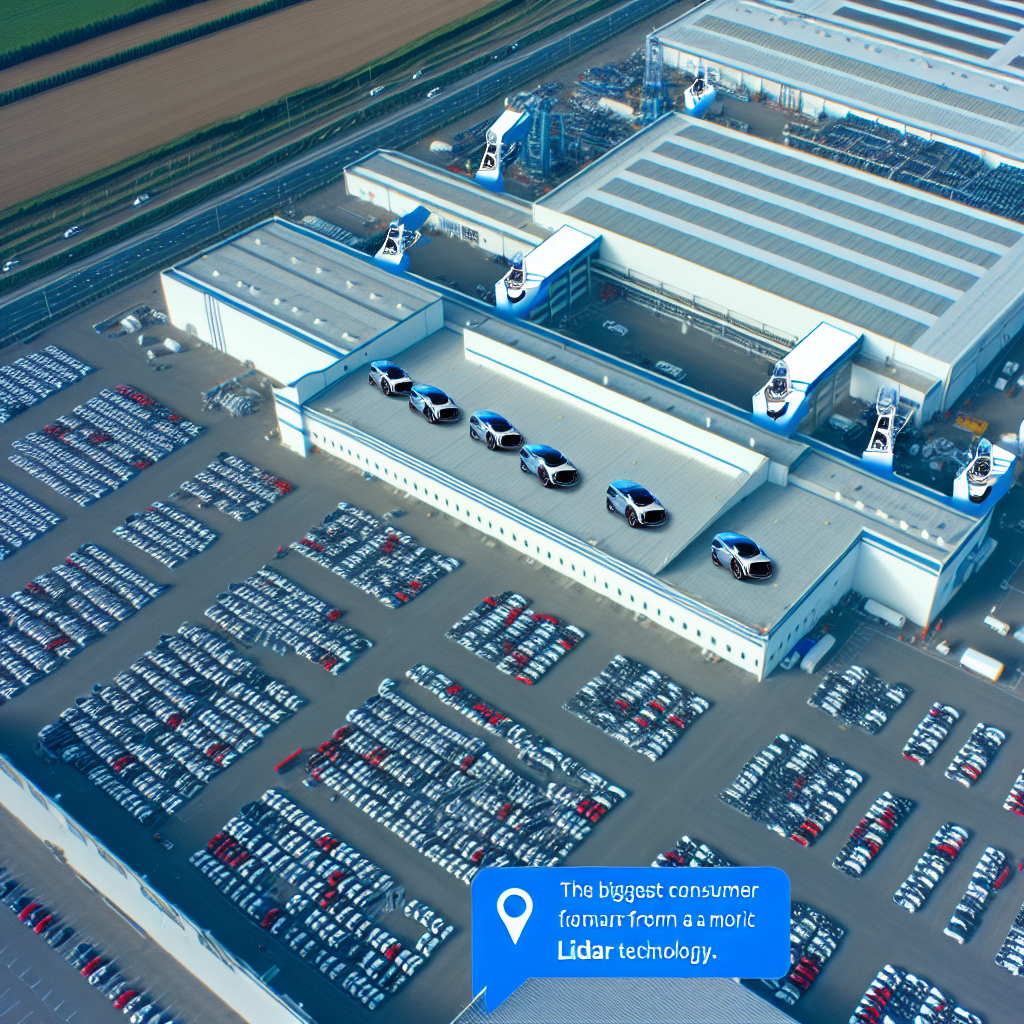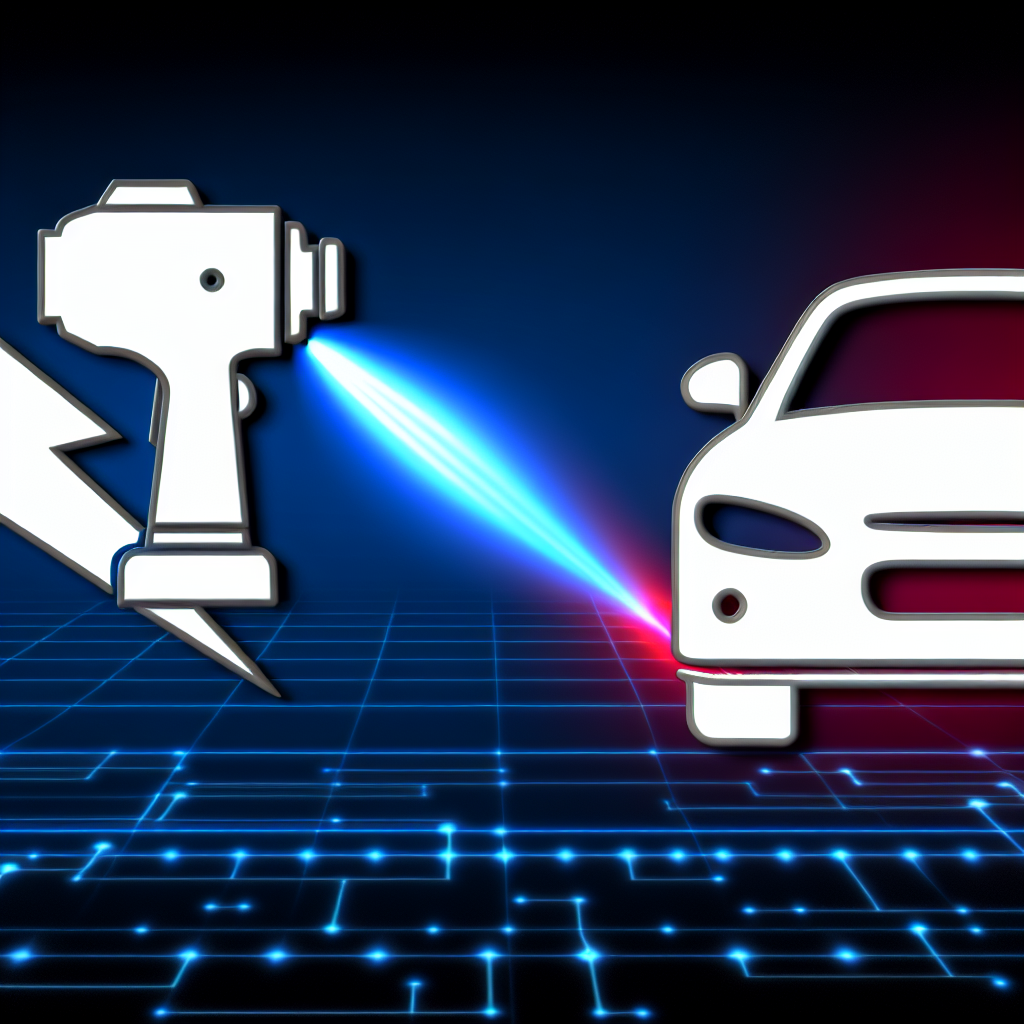Luminar’s Lidar Technology and Its Role in Tesla’s Autonomous Vehicles
Tesla, the renowned electric vehicle manufacturer, has been making significant strides in the development of autonomous driving technology. One crucial component of this technology is lidar, a sensing technology that uses lasers to measure distances and create detailed maps of the surrounding environment. Luminar, a leading provider of lidar technology, has emerged as Tesla’s largest lidar customer, playing a pivotal role in the advancement of Tesla’s autonomous vehicles.
Lidar, short for Light Detection and Ranging, is a remote sensing method that uses laser light to measure distances. It works by emitting laser pulses and measuring the time it takes for the light to bounce back after hitting an object. By analyzing the time it takes for the light to return, lidar systems can create highly accurate three-dimensional maps of the environment. This technology is crucial for autonomous vehicles as it enables them to perceive and navigate their surroundings with precision.
Luminar, founded in 2012 by Austin Russell, has quickly established itself as a leader in the lidar industry. The company’s lidar sensors are known for their exceptional range and resolution, making them ideal for autonomous driving applications. Luminar’s sensors can detect objects at a range of up to 250 meters, far surpassing the capabilities of other lidar systems on the market. This extended range allows Tesla’s autonomous vehicles to have a more comprehensive view of their surroundings, enhancing their ability to make informed decisions on the road.
Tesla’s partnership with Luminar began in 2019 when Elon Musk, Tesla’s CEO, announced that the company would be using Luminar’s lidar technology in its autonomous vehicles. This decision marked a significant shift in Tesla’s approach to autonomous driving, as the company had previously relied primarily on cameras and radar for its Autopilot system. Lidar’s ability to provide precise depth perception and detailed mapping capabilities made it an attractive addition to Tesla’s autonomous driving suite.
By incorporating Luminar’s lidar sensors into its vehicles, Tesla aims to enhance the safety and reliability of its autonomous driving technology. Lidar’s ability to create high-resolution maps of the environment allows Tesla’s vehicles to accurately identify and track objects, including pedestrians, cyclists, and other vehicles. This level of detail is crucial for ensuring the safety of both the vehicle occupants and those sharing the road.
Furthermore, Luminar’s lidar technology enables Tesla’s vehicles to navigate complex and challenging driving scenarios. Lidar’s ability to detect objects in low-light conditions and adverse weather, such as rain or fog, provides an added layer of safety for autonomous vehicles. This capability is particularly important as autonomous driving technology continues to evolve and expand into various regions and climates.
The partnership between Tesla and Luminar has not only accelerated the development of autonomous driving technology but has also had a significant impact on the lidar industry as a whole. Tesla’s endorsement of Luminar’s lidar technology has brought increased attention and credibility to the company, leading to partnerships with other major automakers and technology companies.
In conclusion, Luminar’s lidar technology plays a crucial role in Tesla’s autonomous vehicles. By providing accurate depth perception and detailed mapping capabilities, Luminar’s lidar sensors enhance the safety and reliability of Tesla’s autonomous driving technology. The partnership between Tesla and Luminar has not only propelled the development of autonomous driving but has also had a profound impact on the lidar industry. As autonomous driving technology continues to advance, lidar will undoubtedly remain a key component in ensuring the safety and efficiency of self-driving vehicles.
The Benefits and Challenges of Lidar Technology in Tesla’s Vehicles

Tesla, the renowned electric vehicle manufacturer, has recently emerged as Luminar’s largest customer for lidar technology. Lidar, short for Light Detection and Ranging, is a remote sensing method that uses laser light to measure distances and create detailed 3D maps of the surrounding environment. This technology has gained significant attention in the automotive industry due to its potential to enhance autonomous driving capabilities and improve overall safety.
One of the key benefits of lidar technology in Tesla’s vehicles is its ability to provide highly accurate and detailed data about the surroundings. Unlike traditional cameras or radar systems, lidar can generate a precise 3D representation of the environment, including the shape, distance, and movement of objects. This level of accuracy is crucial for autonomous vehicles to make informed decisions and navigate complex road scenarios.
Moreover, lidar technology offers a significant advantage in low-light conditions or adverse weather situations. While cameras may struggle to capture clear images in darkness or heavy rain, lidar sensors can still accurately detect and measure objects using laser beams. This capability ensures that Tesla’s autonomous vehicles can operate safely and reliably in various weather conditions, reducing the risk of accidents and improving overall driving experience.
Another notable benefit of lidar technology is its ability to detect objects at a much greater distance compared to other sensor systems. By emitting laser beams and measuring the time it takes for them to bounce back, lidar sensors can identify objects several hundred meters away. This extended range allows Tesla’s vehicles to anticipate potential hazards well in advance, giving them more time to react and avoid collisions. This feature is particularly crucial for autonomous driving systems, as it enables them to make proactive decisions and ensure passenger safety.
However, despite its numerous advantages, lidar technology also presents some challenges that need to be addressed. One of the primary concerns is the high cost associated with lidar sensors. Currently, lidar systems can be quite expensive, making them less accessible for mass-market vehicles. Tesla’s partnership with Luminar aims to address this issue by developing a more affordable and scalable lidar solution, which could potentially accelerate the adoption of autonomous driving technology.
Another challenge is the size and integration of lidar sensors into vehicles. Lidar sensors are typically bulky and require careful placement to ensure optimal coverage of the surroundings. Integrating these sensors seamlessly into the design of Tesla’s vehicles without compromising aesthetics or functionality can be a complex task. However, advancements in lidar technology are continuously being made, with companies like Luminar working on developing smaller, more compact sensors that can be easily integrated into various vehicle models.
In conclusion, lidar technology holds immense potential for enhancing autonomous driving capabilities and improving safety in Tesla’s vehicles. The highly accurate and detailed data provided by lidar sensors, along with their ability to operate in low-light and adverse weather conditions, make them an invaluable tool for autonomous driving systems. While challenges such as cost and integration remain, collaborations between companies like Tesla and Luminar are driving innovation and paving the way for a future where lidar technology becomes more accessible and widespread in the automotive industry.
The Future of Lidar Technology in the Automotive Industry: Insights from Tesla’s Partnership with Luminar
Tesla, the renowned electric vehicle manufacturer, has recently made headlines as the largest customer of Luminar, a leading provider of lidar technology. Lidar, short for Light Detection and Ranging, is a remote sensing method that uses laser light to measure distances and create detailed 3D maps of the surrounding environment. This technology has gained significant traction in the automotive industry, particularly in the development of autonomous vehicles.
Tesla’s partnership with Luminar signifies the growing importance of lidar technology in the automotive sector. Lidar sensors, when integrated into vehicles, enable them to perceive and understand their surroundings with exceptional accuracy. This is crucial for autonomous driving systems, as they heavily rely on real-time data to make informed decisions and navigate safely on the roads.
One of the key advantages of lidar technology is its ability to provide high-resolution 3D maps of the environment. Traditional sensors, such as cameras and radar, have limitations in accurately perceiving objects and their distances. Lidar, on the other hand, emits laser beams that bounce off objects and return to the sensor, allowing for precise measurements of distance and object shape. This level of detail is essential for autonomous vehicles to accurately detect and classify objects, such as pedestrians, cyclists, and other vehicles.
Tesla’s decision to partner with Luminar demonstrates their commitment to enhancing the safety and capabilities of their vehicles. Lidar technology can significantly improve the accuracy of Tesla’s Autopilot system, which is designed to assist drivers with tasks such as lane-keeping and adaptive cruise control. By integrating lidar sensors into their vehicles, Tesla aims to enhance the perception capabilities of their Autopilot system, making it more reliable and efficient.
Furthermore, lidar technology can also play a crucial role in enabling fully autonomous driving. While Tesla’s current Autopilot system is considered a Level 2 autonomous system, which requires driver supervision, lidar technology can pave the way for Level 4 and Level 5 autonomy. These levels of autonomy involve vehicles that can operate without human intervention in specific conditions or in all conditions, respectively. Lidar’s ability to provide accurate and real-time data about the surrounding environment is vital for achieving such high levels of autonomy.
However, it is worth noting that lidar technology is not without its challenges. One of the primary concerns is the cost associated with lidar sensors. Traditional lidar systems have been prohibitively expensive, making them less accessible for widespread adoption. However, Luminar has made significant advancements in reducing the cost of lidar sensors, making them more viable for integration into mass-produced vehicles. Tesla’s partnership with Luminar is a testament to the increasing affordability and feasibility of lidar technology in the automotive industry.
In conclusion, Tesla’s partnership with Luminar highlights the growing significance of lidar technology in the automotive industry. Lidar sensors offer high-resolution 3D mapping capabilities, enabling vehicles to perceive and understand their surroundings with exceptional accuracy. Tesla’s integration of lidar sensors into their vehicles aims to enhance the safety and capabilities of their Autopilot system, while also paving the way for fully autonomous driving in the future. While challenges such as cost remain, the advancements made by companies like Luminar are making lidar technology more accessible and feasible for widespread adoption. As the automotive industry continues to evolve, lidar technology is poised to play a pivotal role in shaping the future of autonomous vehicles.


